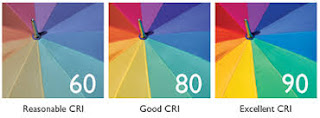How Do We Perceive Lighting
The Importance of Light and Vision
We say the lighting is good ,when our eyes can clearly and pleasantly perceive the things around us.
Thus lighting should be both functional and pleasant to be effective.
The principal criteria on which every lighting installation should be judged ,based on the function of the lighted space or area with regard to visual perception are:
* the lighting level
* the luminance or brightness in the field of view
* the freedom from glare
* light directionality and shadows
* light colour,colour appearance and colour rendering
you have to add aesthetic quality to define the lighting quality.
Lighting Level
Deciding on the Lighting level is one of the first consideration in design of a Lighting system.
Lighting level is also known as average illuminance.
The illuminance refers to the amount or quantity of light present on the surface of interest.
A few examples of lighting levels:
Summer sky, cloudless, in the open 100000 lux
Ditto, in the shade of a tree 10000 lux
in the open, overcast sky 5000 lux
indoors by the window 2000 lux
full moon, on a clear night 0.25 lux
Different eye tasks require different lighting levels
The lighting level depends on such factors as work duration,contrast of the task,the risk of making faults,,age of the worker, and the amount of daylight present.
Lighting Quality
Lighting quality embraces a number of aspects, such as the luminance distribution in the field of view, freedom from disturbing glare, the direction of lighting and able to create shadows, color appearance and color rendering, and the aesthetic treatment of the lighting with regard to the surroundings.
The higher the luminance of a surface,the brighter it will appear to the human eye.
Prevent excessive contrasts as too high contrast cause glare.
Daylight also causes glare.
Man is dependent on light for most of his life. Without light no life on earth is possible. Man has five senses of which vision is recognized as the most important link with our surroundings. Seeing is possible only due to the presence of light; the natural sunlight,sunlight reflected by the moon and artificial light.
Thus lighting should be both functional and pleasant to be effective.
The principal criteria on which every lighting installation should be judged ,based on the function of the lighted space or area with regard to visual perception are:
* the lighting level
* the luminance or brightness in the field of view
* the freedom from glare
* light directionality and shadows
* light colour,colour appearance and colour rendering
you have to add aesthetic quality to define the lighting quality.
Lighting Level
Deciding on the Lighting level is one of the first consideration in design of a Lighting system.
Lighting level is also known as average illuminance.
The illuminance refers to the amount or quantity of light present on the surface of interest.
A few examples of lighting levels:
Summer sky, cloudless, in the open 100000 lux
Ditto, in the shade of a tree 10000 lux
in the open, overcast sky 5000 lux
indoors by the window 2000 lux
full moon, on a clear night 0.25 lux
Different eye tasks require different lighting levels
The lighting level depends on such factors as work duration,contrast of the task,the risk of making faults,,age of the worker, and the amount of daylight present.
Lighting Quality
Lighting quality embraces a number of aspects, such as the luminance distribution in the field of view, freedom from disturbing glare, the direction of lighting and able to create shadows, color appearance and color rendering, and the aesthetic treatment of the lighting with regard to the surroundings.
Prevent excessive contrasts as too high contrast cause glare.
Daylight also causes glare.




Comments
Post a Comment